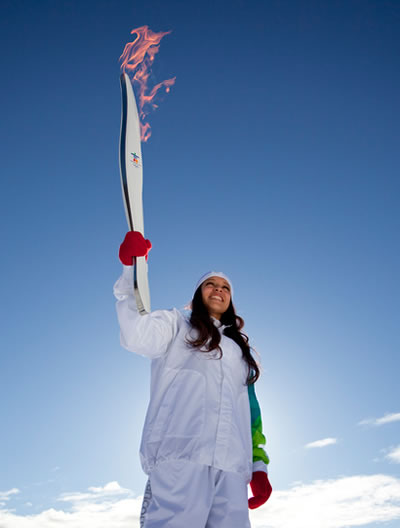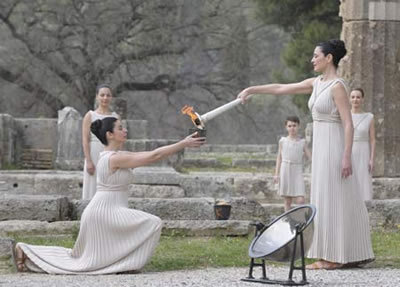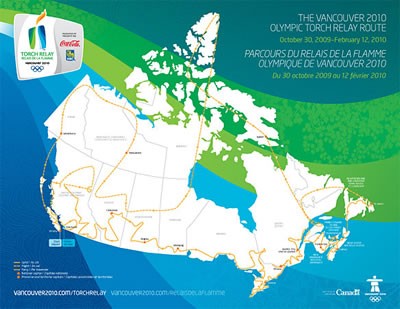The Olympic Torch
The highlight of the opening ceremonies for the 2010 Winter Olympics in Vancouver, Canada will be the entry of the Olympic torch and the lighting of the Olympic flame. The identity of the final torchbearer is usually kept secret until he or she enters the stadium to make the final lap with the Olympic torch. Once the Olympic flame is lit, it remains burning until the closing ceremonies when it is extinguished.

What Does the Olympic Flame Symbolize?
Fire has divine connotations and its presence on earth was explained by the Ancient Greeks through the myth of Prometheus, who stole fire from the Gods to give to man. According to the myth, Prometheus was chained to a rock by Zeus as punishment. While Prometheus defied the gods with his theft of fire, he revealed the secrets of knowledge, wisdom and the human spirit to Man. Thus, the Olympic flame represents these positive values that Man has always associated with fire. And, the purity of the flame is preserved by lighting it using only the sun's rays.
How Is the Flame Lit?
For both the summer and winter Olympics, the Olympic flame is kindled in Olympia, Greece at the site of the ancient Olympics months before the Olympic games are set to begin. The Olympic flame is lit following an ancient method, using only the rays of the sun and a parabolic mirror. This is the only way the Olympic flame may be lit. It is done in an elaborate ceremony before the ancient Temple of Hera with actresses playing the parts of priestesses. Once lit, the flame is placed in an urn and then transported to the Olympic stadium where it is given to the first torch relay runner by the high priestess.

Travel and Torchbearers
The flame travels first from Athens to its host country by plane. During its flight the flame is kept in lanterns similar to miner's lights. Once there, runners or athletes were typically chosen to carry the flame. Today, the flame is carried not only by athletes and celebrities but also by the general public: young, old, and people with disabilities.
Not only has the flame been carried by even spectrum of humanity but it has also traveled by nearly every mode of transportation imaginable. In 1952, the Olympic flame was transported throughout Norway entirely by skiers. It has been to the Arctic Circle by ski-doo, visited the Great Barrier Reef in Sydney, Australia with a diver, traveled faster than the speed of sound on the Concorde, parachuted, re-enacted the Pony Express on horseback, traveled the Australian desert on camel back, ski jumped, been aboard a Mississippi steamboat and an Indian canoe, and a wagon from the Union Pacific Railroad.
The 2010 Olympic Torch Relay
After being transported from Greece to Canada, the Olympic torch left Victoria, Canada on October 30th, embarking on a 106 day run en route to Vancouver, its final destination. Each torch relay has its own theme. The theme for Vancouver is: With Glowing Hearts.
The torch will head far north, coming within 560 miles of the North Pole, and will then make it's way throughout Canada, passing through former Canadian host cities, Calgary and Montreal. It will travel 621 miles by water, 11,184 miles by air and 16,155 miles on land before arriving in Vancouver to light the Olympic Cauldron during the opening ceremony.
The Olympic flame will pass through 1,020 communities and places of interest during its 27,961 mile journey. This ambitious route is the longest torch relay in Olympic history.



